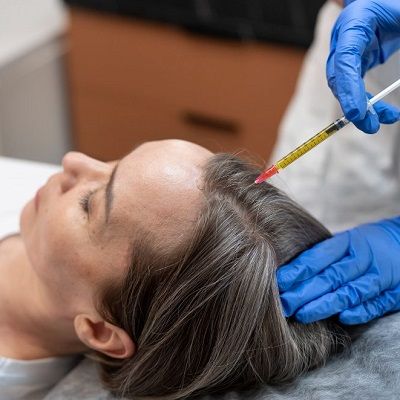Introduction
In the ever-evolving field of hair restoration, Platelet-Rich Plasma (PRP) therapy has emerged as a groundbreaking technology that offers hope to millions experiencing hair loss. From its initial development to its current advanced state, PRP hair treatment technology has undergone significant transformations, reflecting broader trends in medical innovation and cosmetic dermatology. This article delves into the evolution of PRP hair treatment at the Best PRP Hair Treatment Clinic in Muscat, exploring its historical roots, technological advancements, current methodologies, and future prospects.
Historical Background and Development
Early Foundations of PRP Therapy
Platelet-Rich Plasma therapy has its origins in the field of regenerative medicine, where the use of blood components to enhance healing was first explored. The concept of using platelets—cells in the blood that aid in clotting and healing—for therapeutic purposes dates back to the early 20th century. However, it was not until the 1970s and 1980s that PRP began to gain traction in clinical applications.
Initial Use in Orthopedics
PRP's initial use was predominantly in orthopedics, where it was employed to promote healing in musculoskeletal injuries. The success of PRP in this field laid the groundwork for its exploration in other medical areas, including dermatology and hair restoration. The idea of using PRP to stimulate hair growth was inspired by the observed regenerative effects in other tissues.
Technological Advancements in PRP Hair Treatment
Refinement of PRP Extraction Techniques
The early methods of PRP extraction were relatively rudimentary, involving basic centrifugation techniques to separate platelet-rich plasma from whole blood. Over time, advancements in centrifugation technology and blood processing have led to more precise and efficient methods for PRP extraction. Modern devices are designed to maximize the concentration of platelets and growth factors, enhancing the overall efficacy of the treatment.
Enhanced PRP Formulations
Advancements in understanding the biochemical properties of PRP have led to improved formulations. Initially, PRP was a crude mixture of plasma and platelets, but contemporary practices involve optimizing the platelet concentration and incorporating additional growth factors and bioactive proteins. These enhancements aim to boost the regenerative potential of PRP, leading to better clinical outcomes.
Integration with Other Technologies
The integration of PRP with other technologies has further refined its application. For instance, the combination of PRP with microneedling—a technique that involves creating micro-injuries in the scalp to enhance absorption—has shown promising results in improving hair growth. Additionally, advancements in imaging technology and monitoring tools have enabled more precise assessment of treatment outcomes and individualized therapy plans.
Current Methodologies and Applications
Standard PRP Protocols
Today, PRP hair treatment follows a standardized protocol that involves several key steps. Blood is drawn from the patient, processed to separate the PRP, and then injected into the scalp. The procedure typically requires multiple sessions to achieve optimal results, and patients are often advised to undergo periodic maintenance treatments.
Personalized Treatment Approaches
Current methodologies emphasize personalized treatment plans tailored to the individual’s specific needs. Factors such as the degree of hair loss, the patient’s overall health, and their response to previous treatments are considered when designing a PRP regimen. This personalized approach aims to enhance the effectiveness of the therapy and improve patient satisfaction.
Research and Clinical Trials
Ongoing research and clinical trials continue to expand the understanding of PRP therapy. Studies are investigating the long-term effects of PRP on hair growth, the optimal frequency of treatments, and potential combinations with other therapeutic agents. This research is crucial for refining treatment protocols and ensuring the best possible outcomes for patients.
Future Prospects and Innovations
Advanced PRP Processing Techniques
Future advancements in PRP technology are likely to focus on further refining the processing techniques. Innovations in centrifugation and blood processing may lead to even higher concentrations of platelets and growth factors, potentially enhancing the regenerative effects of PRP. Researchers are also exploring novel methods for optimizing the quality and consistency of PRP preparations.
Combination Therapies and Personalization
The future of PRP hair treatment may involve more sophisticated combination therapies. Integrating PRP with emerging technologies such as stem cell therapy, gene editing, or new pharmaceuticals could offer enhanced treatment options. Personalized medicine will continue to play a significant role, with treatments increasingly tailored to individual genetic profiles and specific hair loss conditions.
Expanding Applications
While PRP is primarily used for hair restoration today, its applications may expand into other areas of dermatology and regenerative medicine. The principles of PRP therapy could be adapted for treating other skin conditions, promoting wound healing, and even addressing systemic diseases.
Conclusion
The evolution of PRP hair treatment technology reflects the broader advancements in medical science and technology. From its early origins in regenerative medicine to its current state as a sophisticated and personalized treatment option, PRP therapy has demonstrated remarkable progress. As research continues and new innovations emerge, the future of PRP hair treatment holds promise for even more effective and tailored solutions for those affected by hair loss. The journey of PRP therapy is a testament to the dynamic nature of medical technology and its potential to improve lives in meaningful ways.
